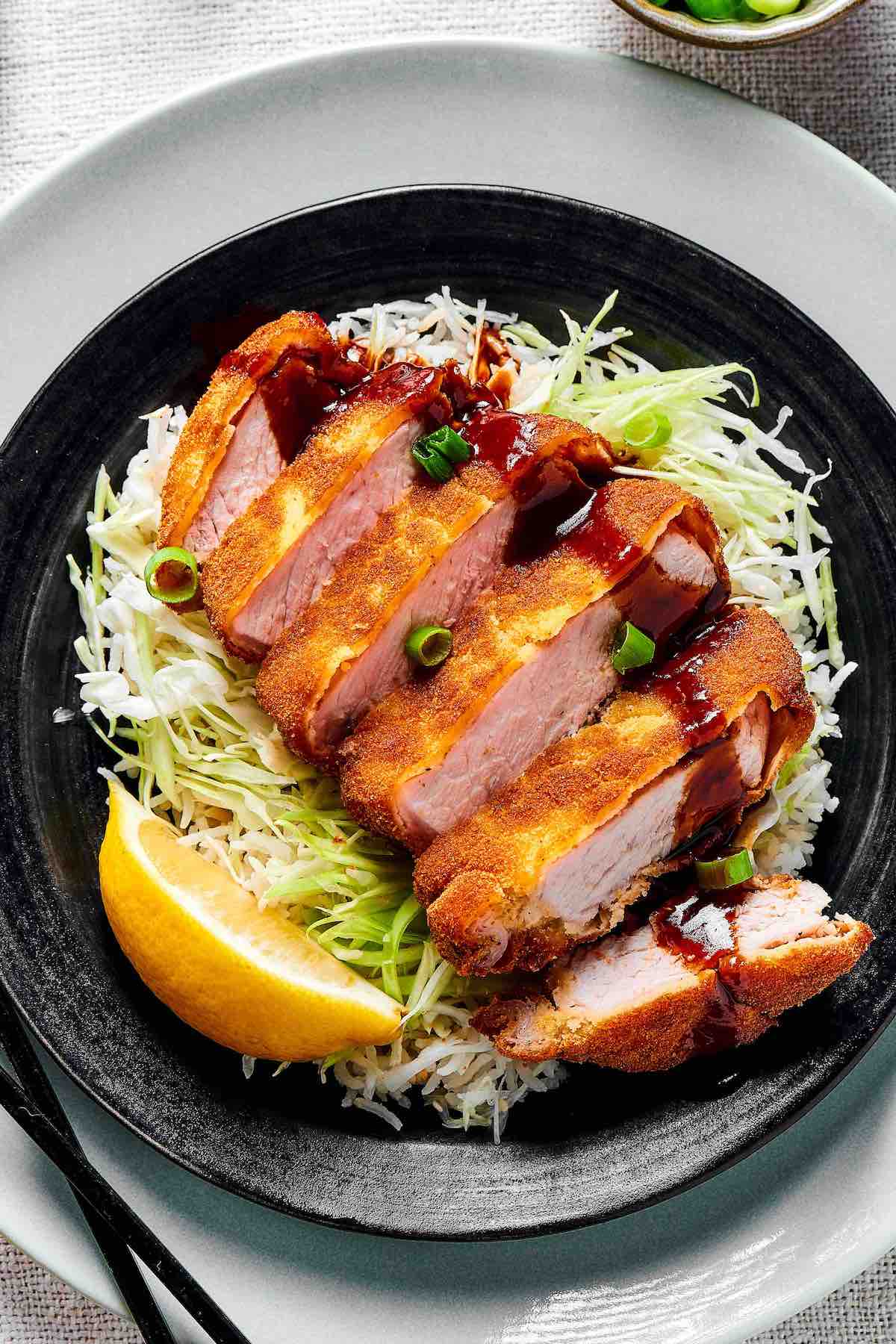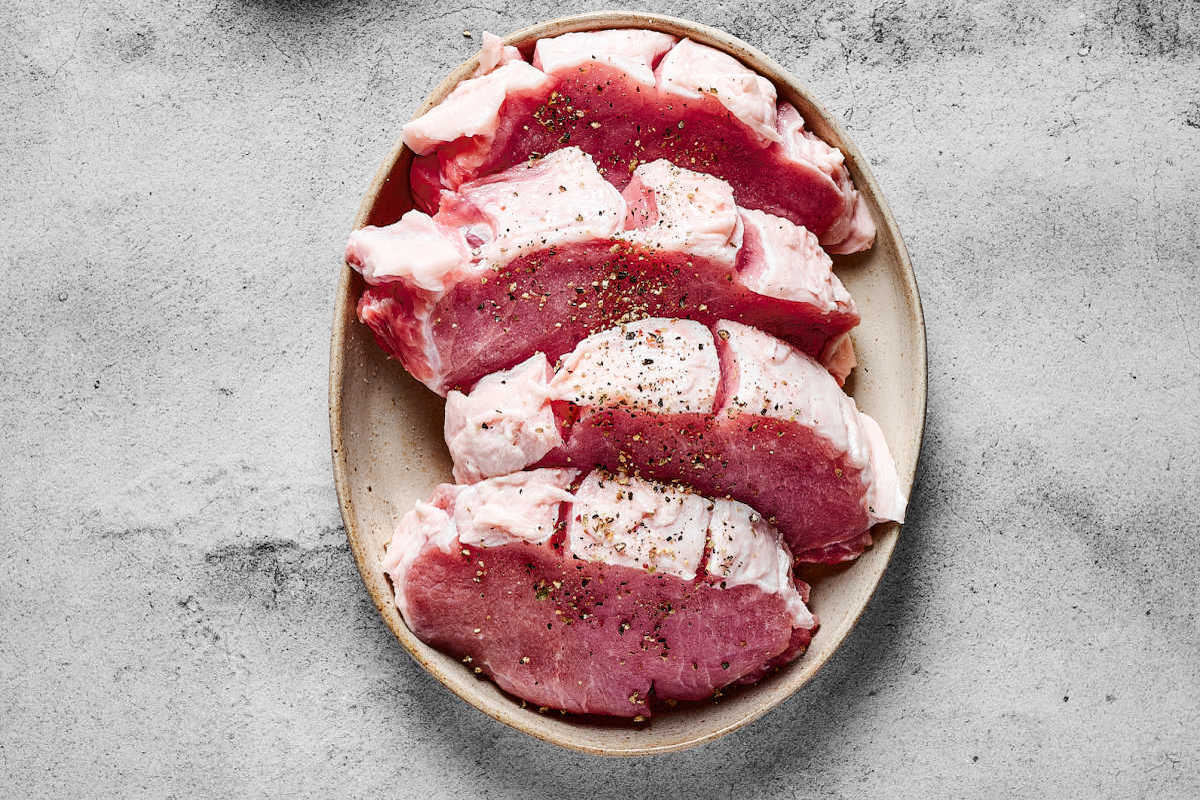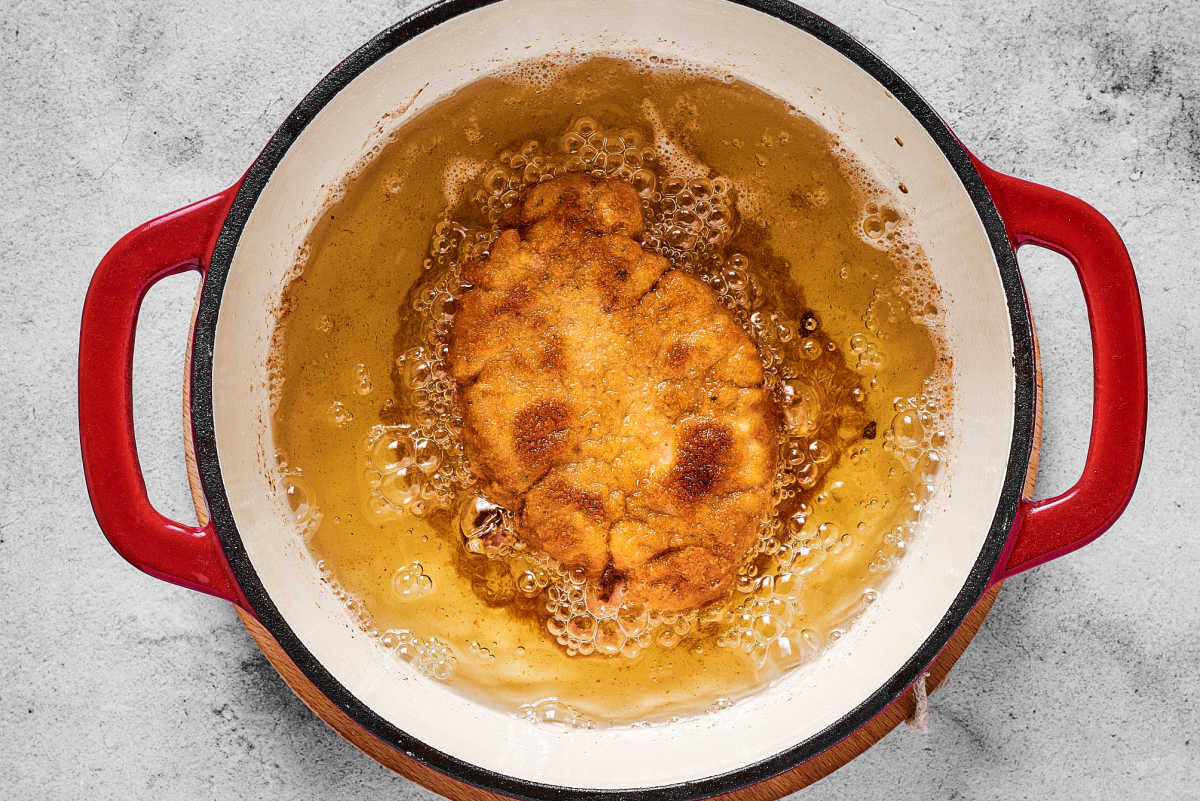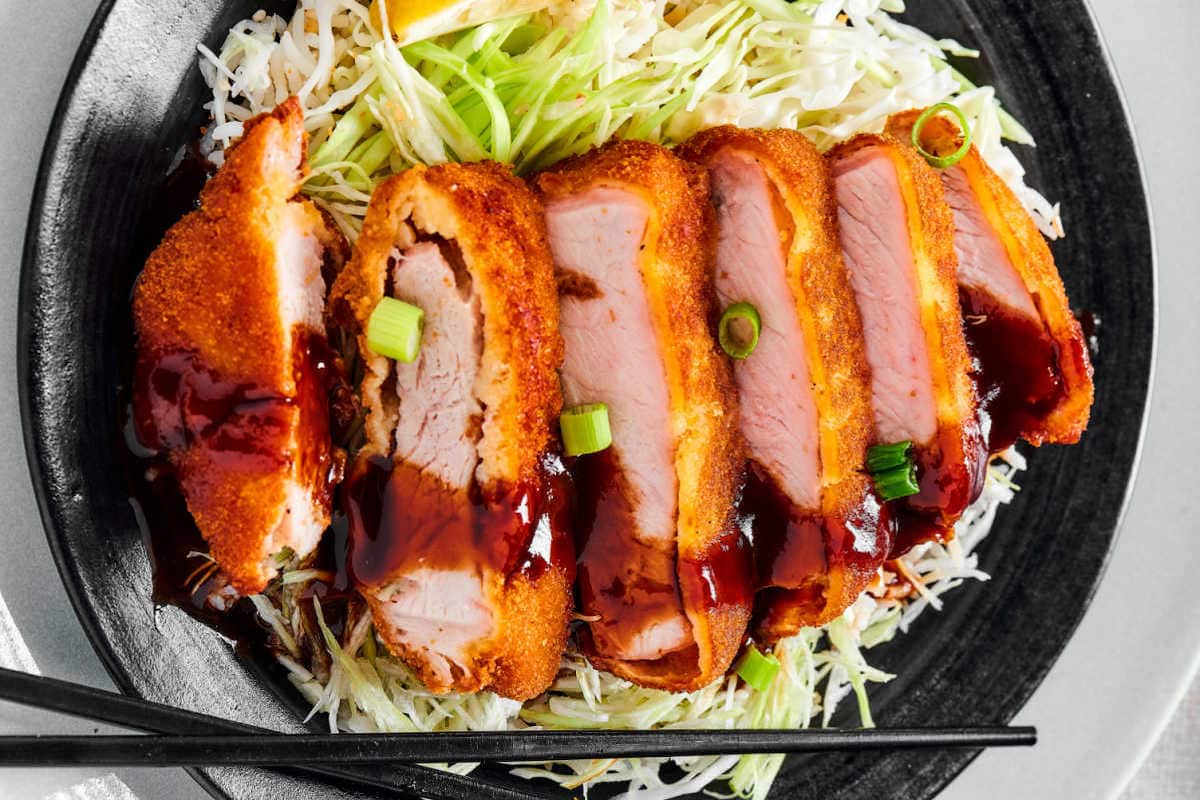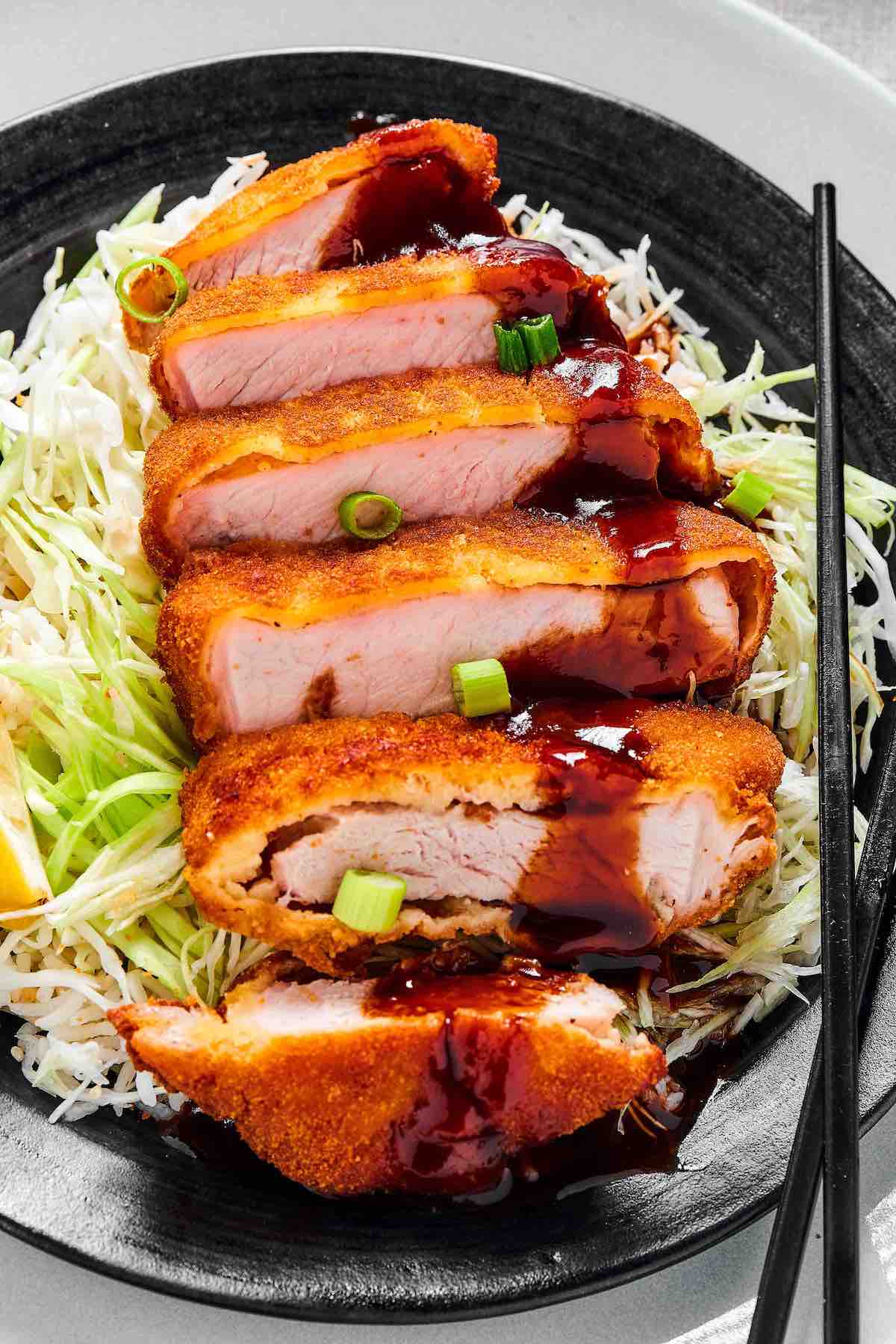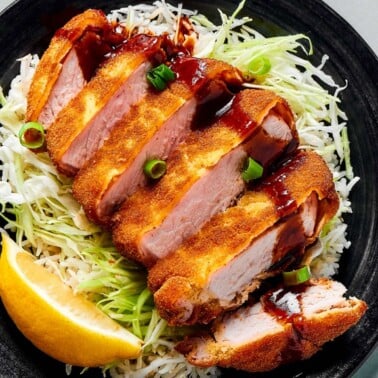Love cooking pork? Try my grilled pork tenderloin, air fryer ribs, pork steak, and crispy pork belly next. Whenever my family and I try a new Japanese restaurant, I always judge its quality by how good their tonkatsu is. Essentially a Japanese-style deep-fried pork cutlet, it’s like the Japanese version of schnitzel. By choosing a fattier cut of pork, you get a crispy crust and a tender, juicy center. Pair it with a savory, tangy katsu sauce, and you have something truly special.
Why I love this recipe
Quick to make. All you have to do is dredge the pork, fry it, and whisk together the sauce ingredients. Dinner will be on the table before you know it! Versatile. While traditionally served with white rice and shredded cabbage, you can pair it with an Asian cucumber salad or, my favorite, make a katsu burger! It’s unique but comforting. The katsu sauce gives it a totally different flavor than your average pork chop, yet the crispy texture is something everyone will love. Oven option. I prefer that crackling skin you get from frying, but when I want a lighter recipe, I bake it in the oven.
Ingredients needed
Pork fillet. I like using boneless pork loin fillets because they have the proper amount of fat without becoming greasy. If you can’t find fillets, look for pork steaks. Salt and black pepper. To taste. Flour. I used regular all-purpose flour. Use gluten-free flour if needed. Large eggs. As always, I suggest using room-temperature eggs. Panko bread crumbs. Essential for the proper texture and color. Panko is a unique type of breadcrumb made from crustless white bread, making for larger flakes. Katsu sauce. Skip the store-bought kind and make your own with ketchup, Worcestershire sauce, soy sauce, and a dash of sugar. Oil. For frying. Use a neutral oil with a high smoke point, like canola or vegetable oil.
How to make pork katsu
I’ve included step-by-step photos below to make this recipe easy to follow at home. For the full printable recipe instructions and ingredient quantities, scroll to the recipe card at the bottom of this post.
Arman’s recipe tips
Cut the skin into slits. Gently cutting slits on the exterior of the pork will help the breading and seasoning seep into the meat, infusing it with more flavor. Let the pork rest. If time allows, I like to season the cutlets and keep them in the refrigerator for 1-2 hours. This gives the seasoning time to absorb into the meat and makes it extra flavorful. Use a meat thermometer. The internal temperature of the meat should be 165F. Fry in batches. Adding too many cutlets to the pot will drop the oil temperature and lead to unevenly cooked cutlets. If you’re ever uncertain, check that the oil temperature is at least 160F. Remove any brown bits. As I’m frying, sometimes I notice burnt pieces of breading are left in the pot. Try to remove them in between each batch. Swap the protein. Try my chicken katsu, beef katsu, or use tofu to make a vegetarian version!
Storage instructions
To store. Place cooked pork katsu in airtight containers or bags to store in the refrigerator for up to 5 days. If you aren’t a fan of deep frying, you can bake the breaded pork cutlet instead. To bake, preheat the oven to 200C/400F. Dredge the pork, then place it on a greased baking sheet and bake for 25 minutes, flipping halfway through. Once the pork reaches an internal temperature of 165F, it’s ready to slice and serve. To freeze. Use freezer-safe bags or containers to freeze leftovers for up to three months. Reheating. You can reheat it in a non-stick pan or skillet until you hear it sizzling.
Frequently asked questions
More of my favorite Japanese dishes
Chicken yakitori Spicy ramen Sushi bake Unagi don Or any of my Japanese recipes
Originally published January 2023, updated and republished August 2024
